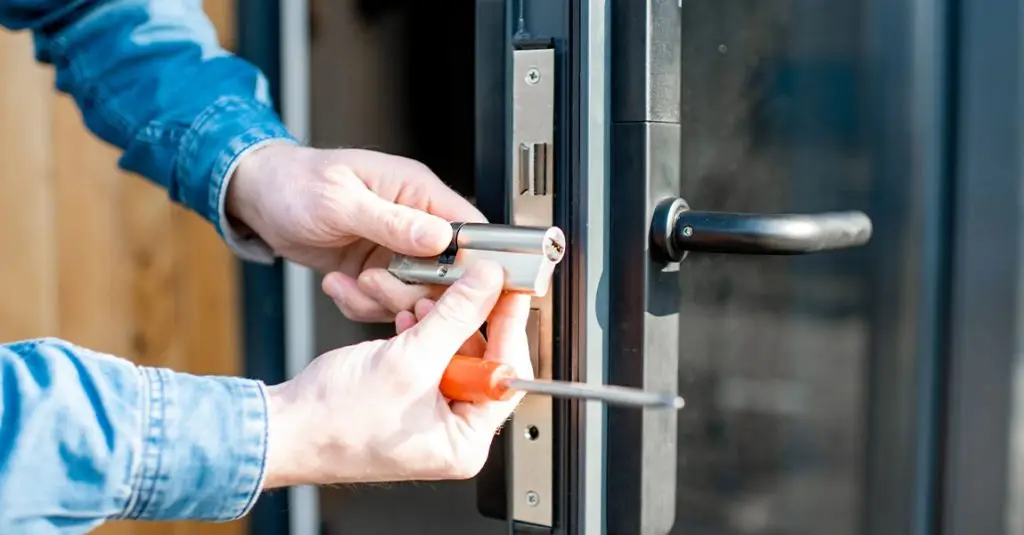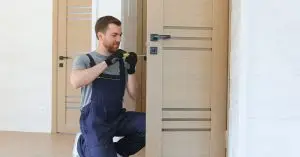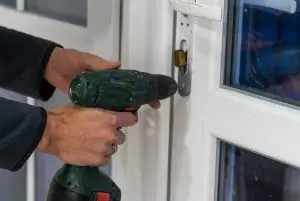When we think about improving security, we often start with locks and alarms, but the real value lies in understanding how all the parts of our property work together. A locksmith security consultation helps uncover weak spots, prevent problems before they happen, and bring peace of mind that every door, window, and access point serves its purpose. Whether you are moving into a new home, managing a business, or simply rethinking safety, this process offers practical insights that go far beyond changing a lock.
Understanding the Purpose of a Security Consultation
A security consultation is not about selling new locks or pushing upgrades. It is about assessing how well your property protects you and how it could do better. During the consultation, a professional locksmith examines physical entry points, evaluates existing systems, and identifies vulnerabilities that could expose your home or business to risks.
We look at how doors close, how locks function, and whether the right type of hardware is in place for your specific environment. It is a mix of technical expertise and situational awareness. For example, the best lock for a downtown storefront is not the same as what works for a family home in the suburbs. The locksmith’s role is to recognize these differences and tailor the security approach accordingly.
Step One: Reviewing Entry Points
Every consultation starts with the basics. We walk through the property and check every exterior door, window, and access point. The focus is on how easy it might be for someone to force entry or bypass the locking mechanism. We also look for gaps between the door and the frame, signs of wear, or older lock designs that could be picked or bumped.
For businesses, we inspect loading docks, back entrances, and employee access doors, as these often present the weakest link in overall security. We also pay attention to hardware compatibility. Sometimes doors are equipped with locks that do not match the door material or frame type, reducing both performance and durability. This step is about identifying the simplest fixes that create the biggest difference.
If you are unsure where to begin improving your property’s protection, finding a locksmith in Calgary is the first step toward getting professional insight based on your location and needs.
Step Two: Evaluating Existing Locks and Hardware
Once the physical layout is understood, the locksmith evaluates the strength and functionality of the existing locks. We check if the locks meet current safety standards, whether they are grade-rated, and if they show signs of tampering or poor installation.
It is common for older locks to still be in use long after they have stopped offering proper protection. Many people rely on standard deadbolts without realizing that their strike plates are not reinforced or their screws are too short to resist force. A locksmith can recommend small upgrades like longer screws, door reinforcements, or higher-quality cylinders that improve resistance against break-ins without needing to replace the entire door.
We also check for smooth operation. A lock that sticks, misaligns, or requires extra effort to turn is not just inconvenient. It may indicate internal wear or improper installation that could eventually lead to failure.
Step Three: Assessing Access Control and Key Management
Good security depends on more than just locks. It is also about who has access and how that access is controlled. In homes, we often find spare keys left in predictable places, keys lent to contractors, or locks rekeyed long ago but never updated after staff or tenants changed.
During a consultation, we review how keys are stored, distributed, and tracked. For businesses, this includes examining how keys are issued to employees and whether a master key system could simplify and strengthen control. In many modern workplaces, we discuss options for keyless or restricted systems that can be easily reprogrammed if someone leaves or loses a key.
We also help you determine whether your security relies too heavily on one point of failure. For example, if one lost key grants access to multiple areas, that design needs to be reconsidered. The consultation helps clarify these connections and ensure accountability in who can open what.
Step Four: Reviewing Compliance and Liability
Many property owners are not aware that local regulations and insurance policies often require specific hardware for compliance. For instance, fire doors must have self-closing mechanisms and certain types of latch systems to meet safety codes. A security consultation includes checking that your locks meet these standards.
We look at whether emergency exits can be opened from the inside without special tools or keys, whether glass doors have proper safety film, and whether commercial locks meet accessibility requirements. Non-compliance can lead to fines or denied insurance claims in case of a break-in or fire. Addressing these issues proactively saves both time and money.
Step Five: Identifying Digital and Smart Lock Opportunities
The consultation also covers technology-based options. Many people consider switching to smart locks but are unsure which type fits their property best. We help evaluate compatibility with existing doors, Wi-Fi networks, and user preferences.
Some smart systems work better in single-family homes, while others suit office environments that require multiple user codes or time-based access. A locksmith explains the difference between Wi-Fi, Bluetooth, and keypad entry systems, helping you avoid investing in features you do not need.
We also test for practical usability. Technology is only valuable if it fits your daily routine. If your staff struggles to use a digital access system or if the battery dies frequently, that system weakens security instead of improving it.
Step Six: Discussing Long-Term Maintenance
Security is not static. Locks wear out, technology changes, and building use evolves. A good consultation includes a maintenance discussion to prevent future problems. We outline what kind of routine inspection schedule makes sense for your property, what to watch for in terms of wear, and when to consider rekeying or upgrading.
For homeowners, maintenance might mean checking the integrity of door frames each season and keeping weather exposure from weakening locks. For businesses, it might involve scheduling annual inspections or rekeying after major staff changes. This ongoing care ensures that your security stays reliable over time.
Step Seven: Presenting a Clear Security Plan
After the assessment, we summarize everything in a clear, organized plan. The document includes an overview of findings, priority recommendations, and optional improvements. We explain which changes have the greatest impact and which can wait.
This part often provides relief to property owners who feel overwhelmed by choices. A consultation filters out unnecessary complexity and focuses on what genuinely matters for safety. It also includes estimated costs and timeframes, so decisions can be made logically instead of under pressure after a security incident.
Step Eight: Considering Special Situations
Not all properties face the same challenges. For instance, rental properties require solutions that protect both landlord and tenant interests, while retail stores deal with daily public access and need locks that balance security and convenience.
We also discuss environmental factors. In Calgary, cold winters can affect lock performance. Moisture or temperature changes can cause locks to freeze or contract, making them harder to operate. During the consultation, we can suggest weather-resistant materials or lubricants that reduce seasonal wear and ensure consistent function.
Why the Consultation Matters More Than the Locks Themselves
A good locksmith consultation does not just fix a problem. It builds a framework for ongoing safety. It shifts the mindset from reaction to prevention, saving time, stress, and expense in the long term.
Without a proper assessment, people often upgrade parts of their system randomly—installing a new smart lock without checking door alignment, or adding cameras without addressing the weak latch behind them. A consultation prevents these gaps and connects every element into one working system.
If you are thinking about reviewing your home or business security, it is wise to contact us to schedule a consultation and receive practical, experience-based guidance.
Extra Tip: Ask for Demonstrations During the Visit
One overlooked advantage of a consultation is the opportunity to learn directly from a professional. Ask the locksmith to demonstrate how to check for proper lock engagement, how to lubricate a deadbolt, or how to reset your keypad lock. Watching the process once can help you maintain security more confidently later.
A consultation is not only about what the locksmith sees—it is also about what you learn to notice afterward. Small details like the sound of a latch catching or the feel of a key turning smoothly can tell you a lot about the health of your locks.
Frequently Asked Questions
1. How long does a security consultation take?
Most residential consultations take one to two hours. Larger commercial properties may take half a day or more depending on size and complexity.
2. Do I need to prepare anything before the locksmith arrives?
It helps to have access to all entry points and know which doors or locks have given you trouble in the past. Providing this context allows the locksmith to focus on specific areas quickly.
3. Will a consultation include immediate repairs?
In most cases, the consultation focuses on assessment and recommendations. However, if we identify a serious vulnerability, such as a broken latch or misaligned deadbolt, we can usually fix it on the spot with your approval.
4. Are locksmith consultations only for businesses?
No, they are equally useful for homeowners, tenants, and landlords. Any property can benefit from an objective review of its physical security and key management practices.
5. How often should I schedule a new consultation?
We suggest reviewing your property’s security every few years or whenever you move, remodel, or experience staff or tenant turnover. Regular updates ensure your systems remain aligned with current standards and usage.





